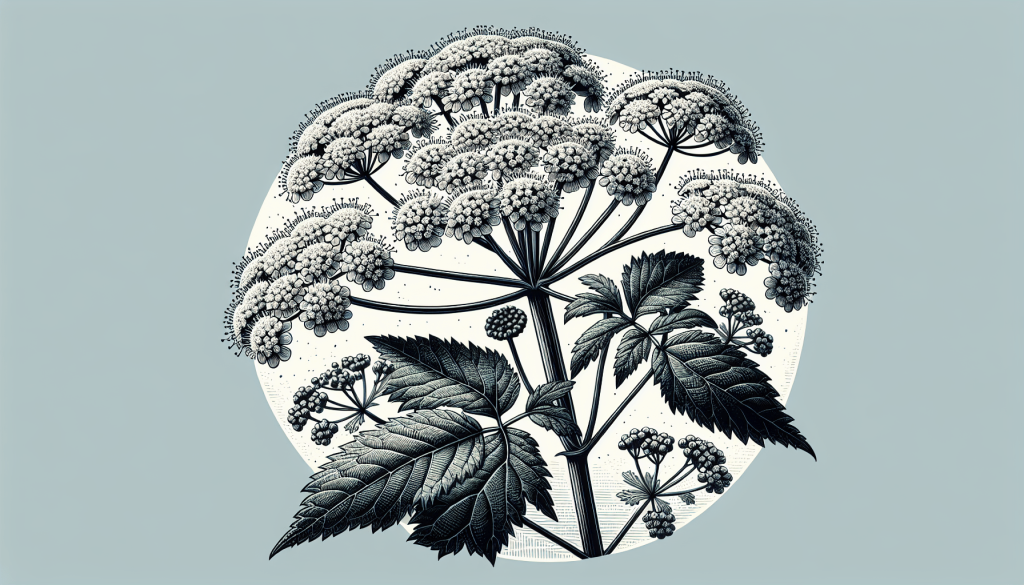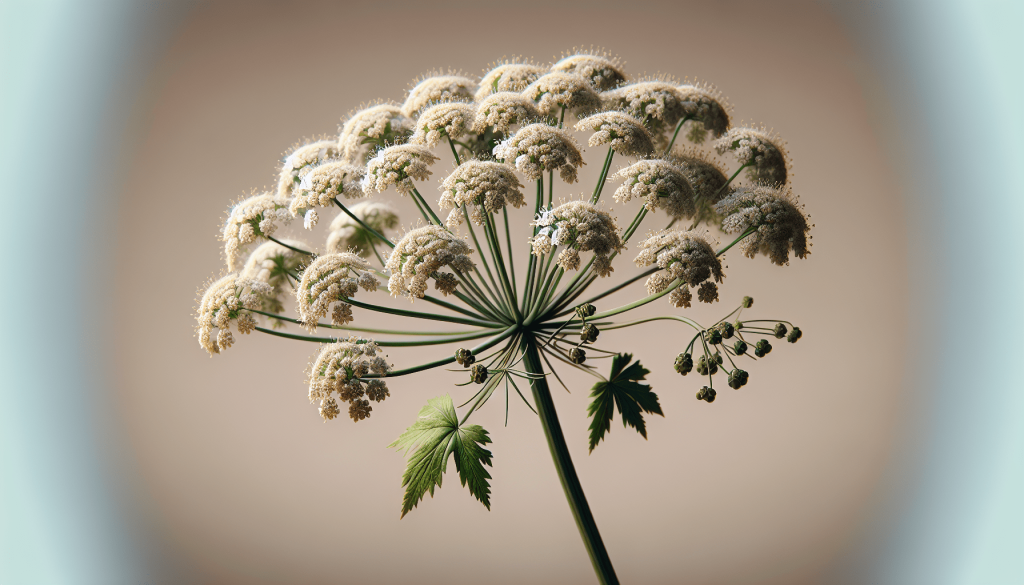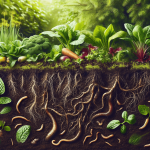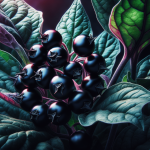This post may contain affiliate links. As an Amazon Associate, we may earn commissions from qualifying purchases.
Have you ever wandered through the beautiful countryside of the United Kingdom, only to discover a hidden danger lurking among the lush greenery? Among the array of flora that adorns this landscape, certain plants pose significant threats to human and animal health. One such perilous plant is Cowbane, scientifically known as Cicuta virosa. Understanding this toxic plant’s characteristics, habitats, and risks can help protect you and others.

What is Cowbane (Cicuta Virosa)?
Cowbane is a highly toxic plant native to the wetlands and watery areas of the UK and other parts of Europe. It belongs to the Apiaceae family, which includes other plants like parsley, celery, and carrots, but unlike these edible relatives, Cowbane is dangerous.
Characteristics of Cowbane
To protect yourself and your loved ones, you must be able to identify Cowbane accurately. Here are some of its defining characteristics:
| Feature | Description |
|---|---|
| Height | Typically grows 1 to 2 meters tall |
| Stems | Hollow and have purple streaks |
| Leaves | Compound, fern-like with a strong, unpleasant odor |
| Flowers | Small, white, and form umbrella-shaped clusters |
| Roots | Thick, tuberous, and extremely toxic |
Similar Plants to Watch For
Cowbane can easily be mistaken for other non-toxic, beneficial plants. It’s essential to know the differences between these plants to ensure safety.
| Plant | Similarity | Key Differences |
|---|---|---|
| Water Parsnip | Similar leaf structure and habitat | Water Parsnip lacks the purple streaks on the stem |
| Wild Carrot | Umbrella-shaped flower clusters | Wild Carrot is shorter and has a distinct carrot smell when crushed |
The Toxicity of Cowbane
Cowbane is notorious for its toxicity. Every part of the plant contains poisonous compounds, but the most dangerous is the root. Let’s look closer at why this plant is so hazardous.
Key Toxic Compounds
| Compound | Description |
|---|---|
| Cicutoxin | A highly poisonous unsaturated alcohol that affects the central nervous system. |
Symptoms of Cowbane Poisoning
Accidental ingestion or even direct contact with Cowbane can have severe consequences. Here are some general symptoms to be aware of:
- Nausea and Vomiting
- Abdominal Cramps
- Confusion and Dizziness
- Seizures
- Respiratory Failure
Treatment for Cowbane Poisoning
Immediate medical attention is crucial if Cowbane poisoning is suspected. Here are the steps to follow in such scenarios:
- Dial Emergency Services: Contact emergency services immediately.
- Don’t Induce Vomiting: This can cause further harm.
- Provide Fresh Air: If the victim has difficulty breathing, ensure they get fresh air.
- Professional Medical Interventions: Emergency treatment may include activated charcoal, anticonvulsants, and respiratory support.
Habitats of Cowbane
Understanding where Cowbane commonly grows can help you avoid accidental exposure. This plant typically thrives in specific environments.
Common Habitats
| Habitat | Description |
|---|---|
| Wetlands | Found in wet, marshy areas with standing water |
| Lakeshores | Grows around the edges of freshwater lakes |
| Streams and Rivers | Often seen along riverbanks where the soil is moist |
Seasonal Appearance
Cowbane’s visibility changes with the seasons, making it crucial to know when it’s most prevalent:
- Spring: Rapid growth begins, leaves start to appear.
- Summer: Flowers bloom, making it easier to identify.
- Autumn: Leaves start to wither, but roots remain toxic.
- Winter: Plant dies back but can regrow from the rootstock in spring.
Cowbane and Ecological Impact
While Cowbane poses significant risks to humans and animals, it also plays a role in its natural habitat. It’s important to consider these impacts for ecological balance.
Role in the Ecosystem
| Ecological Benefit | Explanation |
|---|---|
| Water Filtration | Helps with nutrient cycling in wetland ecosystems |
| Habitat Formation | Provides cover for small animals and insects |
Management and Control
To minimize the risks posed by Cowbane while maintaining ecological balance, proper management practices are necessary.
| Method | Description |
|---|---|
| Mechanical Removal | Physical extraction of the plant; useful for small infestations but requires ensuring that roots are fully removed |
| Herbicides | Chemical treatments but should be used cautiously to avoid affecting non-target species |

Preventive Measures
Awareness is your first line of defense against Cowbane. Here are some key precautions:
Identification Training
- Workshops and Seminars: Attend or organize educational sessions on identifying toxic plants.
- Field Guides: Invest in comprehensive field guides focused on local flora for quick reference.
Safe Foraging Practices
- Never Forage Alone: Always have someone with you who is knowledgeable about local plants.
- Use Gloves and Protective Clothing: Minimizes skin contact with potentially harmful plants.
Informing the Community
Engage your local community in awareness activities. Creating informative materials and organizing community talks can spread knowledge about the dangers of Cowbane.
Emergency Response
Preparedness can significantly reduce the risks if an encounter with Cowbane does occur. Here’s how to set up an effective emergency response.
Emergency Kits
Ensure you have a well-stocked emergency kit when venturing into areas where Cowbane may be present.
| Item | Purpose |
|---|---|
| Activated Charcoal | Aids in absorbing toxins if ingested |
| Antiseptic Wipes | Clean wounds and prevent infections |
| Emergency Contact List | Quick access to medical and emergency contacts |
Educating Loved Ones
Instruct those close to you, especially children, about the dangers of Cowbane and similar toxic plants. Use story-based learning to make it engaging for young minds.
Historical Context
Understanding the historical context of Cowbane can provide insights into its significance and how it has been managed over the years.
Historical Uses and Misuses
Cowbane has a grim history, with records indicating its use in ancient times for sinister purposes.
- Historic Antidote Trials: Explore how earlier communities experimented unsuccessfully with various antidotes.
- Literary References: Cowbane has appeared in literature, often symbolizing danger or hidden threats.
Evolution of Public Awareness
Over the decades, public awareness of Cowbane has evolved due to various factors:
- Scientific Research: Increasing scientific scrutiny and publication of findings have raised awareness.
- Government Regulations: Legislative measures aim to control and manage the spread of toxic plants.
Conclusion
Cowbane (Cicuta virosa) stands as a stark reminder that not all that flourishes in nature is benign. With its beautiful yet deceptive appearance, this toxic plant underscores the importance of awareness and education. By understanding its characteristics, recognizing its habitats, and knowing the symptoms and actions to take in case of exposure, you can significantly reduce the risks it poses. Safe practices and community awareness can ensure that your outdoor adventures remain both enjoyable and safe. Always remember, in the diverse tapestry of the UK’s natural landscape, knowledge is your best ally against hidden dangers like Cowbane.








